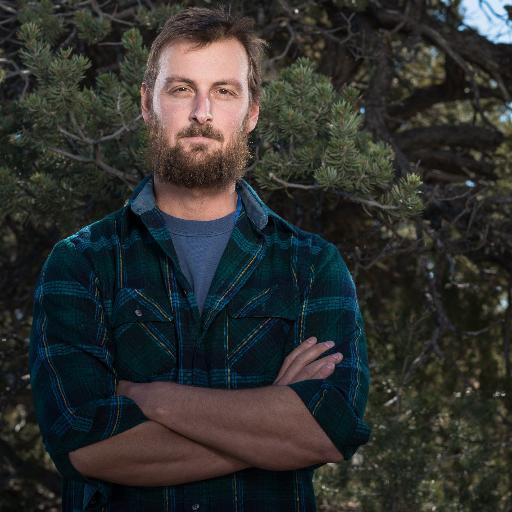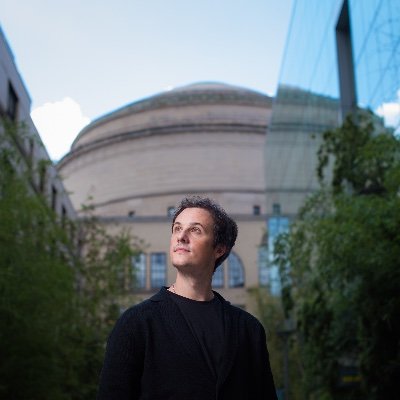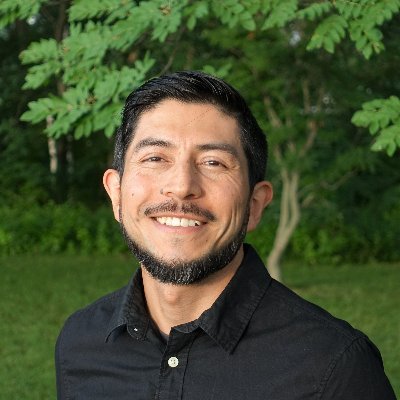
Jon Wang 🏳️🌈🇺🇲🛰
@wangathan
Followers
659
Following
2K
Media
27
Statuses
538
Climate scientist. I look at plants from space. Assistant Professor at University of Utah, leader of @DYCE_Lab
SLC, UT
Joined July 2010
Fall colors aren’t just beautiful — they’re biology in action. As trees prep for winter, leaf pigments shine through, helping them adapt + survive. Narration: Dr. Luiza Maria Aparecido Video Credits: Matt Johnson & Carly Keesler #FallColors #Photosynthesis #Utah #Science
0
2
2
"The weak land carbon sink hypothesis" published in @ScienceAdvances today. Drawing upon satellite biomass, we propose increases in the ocean sink and decreases in fossil fuel emissions to close the budget with a net land sink of 0.8 Pg C/y from 2000-2019
science.org
Satellite-derived time series of vegetation carbon do not support a strong Northern Hemisphere net land carbon sink.
0
2
11
Carbon 'off-sets' are not working. U-led research results in roadmap for harnessing Earth’s natural processes to reduce atmospheric carbon dioxide. https://t.co/fjXZgbEojb
science.utah.edu
Fixing Nature-based Climate Solutions July 30, 2025 Carbon 'off-sets' are not working. U-led research results in roadmap for harnessing Earth’s natural processes to reduce atmospheric carbon dioxide...
0
1
2
More CA state forests are vulnerable to wildfire due to climate change, with recent fires so big and intense that forests can’t keep up. - @uciess Prof. Jim Randerson @randersonjt & University of Utah Prof. Jon Wang @wangathan @DYCE_Lab
https://t.co/wLM6V3Mfiz
ps.uci.edu
More state forests are vulnerable to wildfire due to climate change.
0
1
2
Many thanks to collaborators at @uciess who helped guide this study (@randersonjt @VedBhoot and not-on-Twitter Carl Norlen, Mike Goulden, and Shane Coffield) and @UofUBiology for the support! 7/7
0
0
1
Categorical indices of fire severity (e.g. high vs low) are hard to interpret, and might not capture climate trends. Remote sensing advances are revealing this nuance across ecoregions. Hope this can improve wildfires observation, forest management, and ecosystem models! 6/7
1
0
3
Using a simple model of regional tree loss using burned area, fire severity, and forest exposure, we show that 47% (nearly half!) of observed cumulative tree loss is due to trends in fire severity and forest exposure. Climate warming will exacerbate this. 5/7
1
0
2
Increased forest exposure suggests more dense forests are vulnerable to severe wildfire. In the last decade, wildfire moved in climate space, impacting forests adapted to moister, cooler environments that might have resisted disturbance. 4/7
1
0
2
Average fire severity and forest exposure rose by 30% and 41%, respectively, from 1985-2021. The average tree cover loss per burned area used to be 20%, but recently it has been 34%, on average (+70%!). Increased burned area drives most tree loss, but is not the sole factor! 3/7
1
0
2
We used remotely sensed fractional veg cover and disturbance data to quantify forest exposure (how densely treed were burned areas) and fire severity (relative tree loss) in the average wildfire. Disturbance data: https://t.co/vLMey8OngX Veg data: https://t.co/X0e4TDRiCq 2/7
1
0
2
Hello there! I'm proud to share a new wildfire paper in ERL - California had recent huge fires but tree loss rose much faster, relatively, than burned area. How much is the per-burned-area impact on tree cover losses rising, and why? Paper: https://t.co/ocG26QHqz6 1/7
1
5
36
https://t.co/a06qDpEHWl Assistant Prof Jon Wang found fire severity increased by 30% between the 1980s and 2010s and total tree cover in #California has decreased by 7% since 1985 due to #wildfires and #drought . @wangathan @uofu_science @UUtah
attheu.utah.edu
U biologist Jon Wang, with UC Irvine colleagues, uses satellite imagery to document the growing destructiveness of Western wildfires since 1980.
0
1
5
Toad sat on the edge of his bed. ’Blah,’ said Toad. ‘I feel down in the dumps.’
4
311
2K
Just a reminder to all #dryland scientists, managers, and enthusiasts - please comment on the @NASAEarth #ARID white paper by November 5th so we can make sure all your awesome dryland research ideas, needs, and perspectives are covered! YAY!! 🏜️ 🌵 ☀️ 👇 https://t.co/3gtCNShIkI
2
20
59
Nature research paper: Forest fire size amplifies postfire land surface warming
nature.com
Nature - Climate warming has increased forest fire sizes, amplifying postfire summer warming, with broadleaf trees mitigating this effect; climate-smart forestry should increase broadleaf tree...
2
16
42
Our new publication from today in Earth's Future regarding ARID. Led by @a_feldman24 along with @ecology_awesome and others Adaptation and Response in Drylands (ARID): Community Insights for Scoping a NASA Terrestrial Ecology Field Campaign in Drylands https://t.co/QUo7J8A6JX
agupubs.onlinelibrary.wiley.com
Adaptation and Response in Drylands (ARID) is a 1-year scoping study for a multi-year NASA Terrestrial Ecology dryland field campaign An ARID workshop was held in Tucson, Arizona in October 2023 ...
0
12
33
Congrats to Dr. John F. Pearson, with the help of @UofUBiology Assistant Professor Jonathan Wang, on securing a $50k 1U4U Innovation Funding Seed Grant! Their project will explore the effects of urban heat islands on postoperative outcomes, bridging climate science and medicine.
0
1
4
UCLA Geography is hiring! Assistant Professor in the general area of "Environmental Challenges". If you're a physical scientist wanting to research and teach on policy-relevant environmental issues please apply:
3
48
63
eCO2 can increase NPP and biomass even in old forests, potentially due to a large increase in root exudates (and mediated by ectomycorrhizal fungi?):
nature.com
Nature Climate Change - While experiments in younger trees support increased production under higher CO2, it is unclear whether more mature trees can respond similarly. Here, the authors show...
1
6
26
Exciting news! Our 30m annual GLanCE land cover datasets (2001-2019) for South America are out at the LP-DAAC! They include land change info & EVI metrics from CCDC. Soon on Google Earth Engine along with North America, Europe, & Oceania.🌎 https://t.co/daCUZukRTw
#Landsat #GEE
2
24
100



















